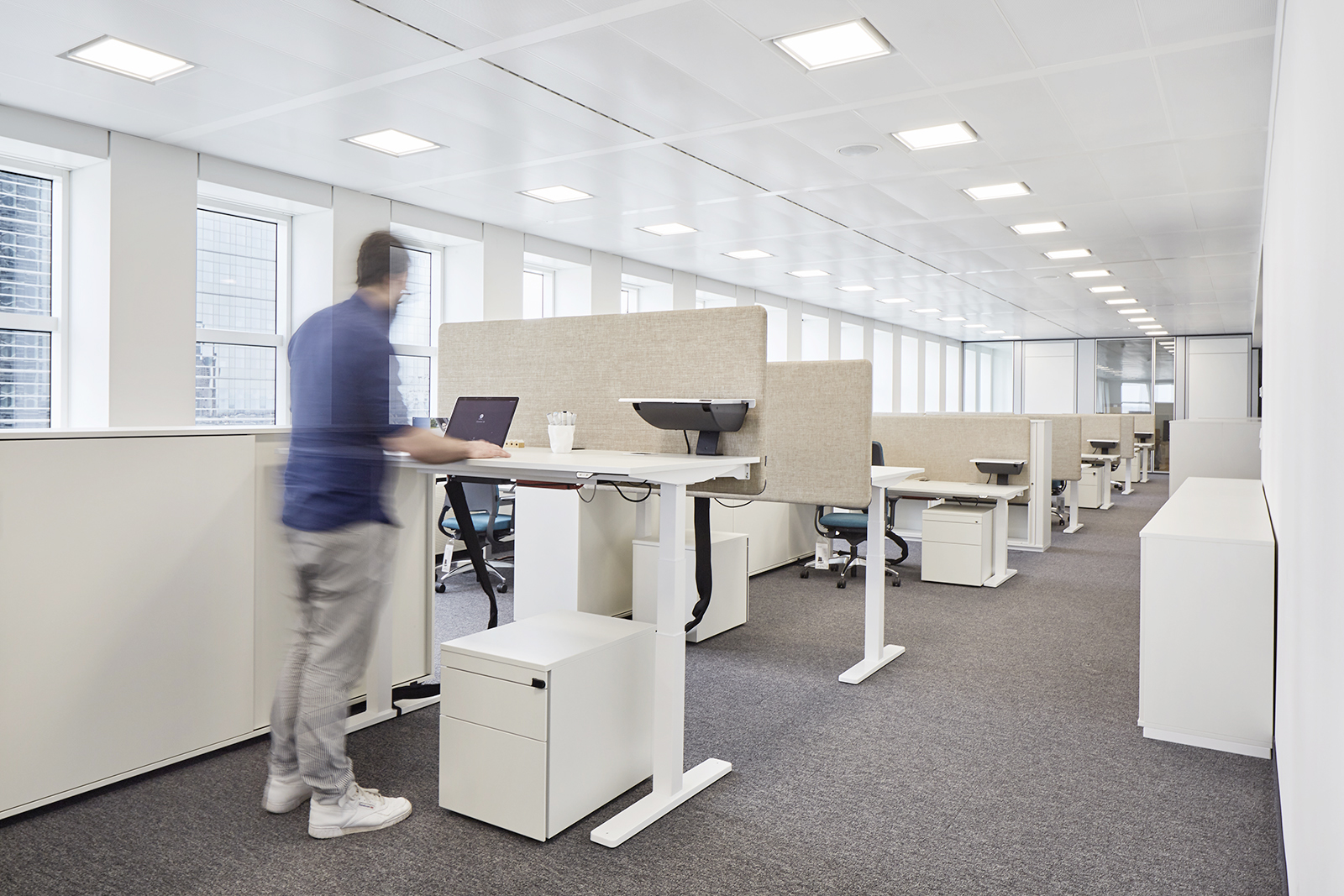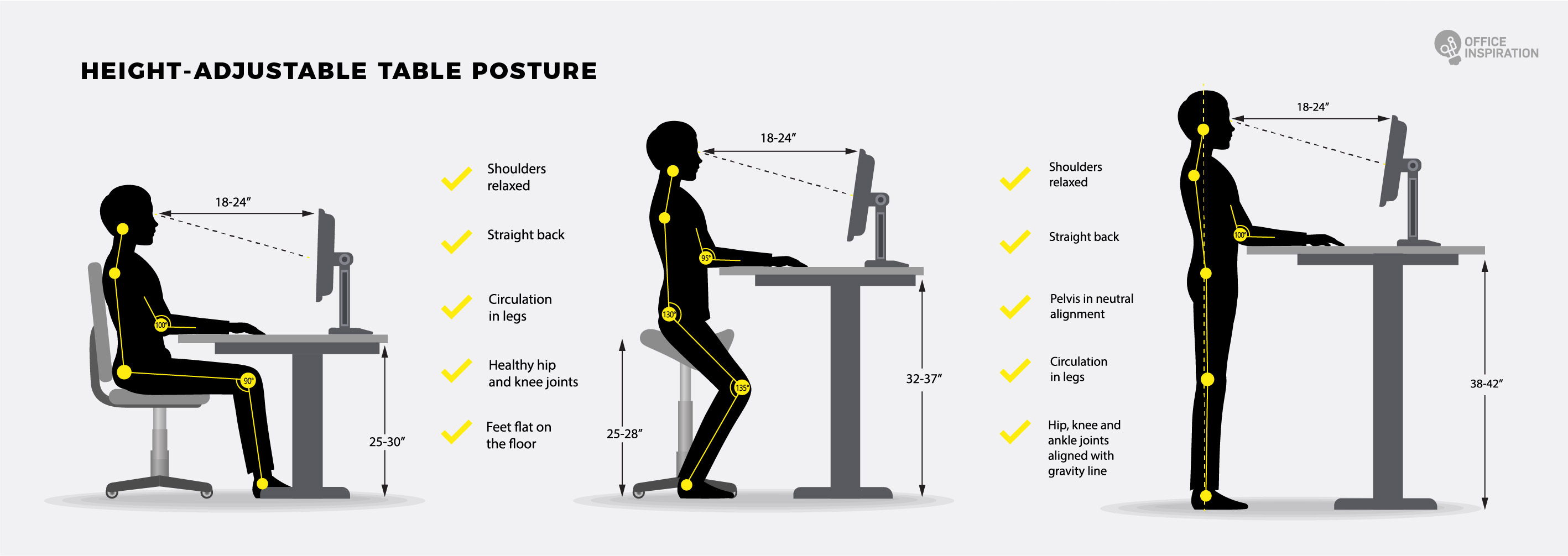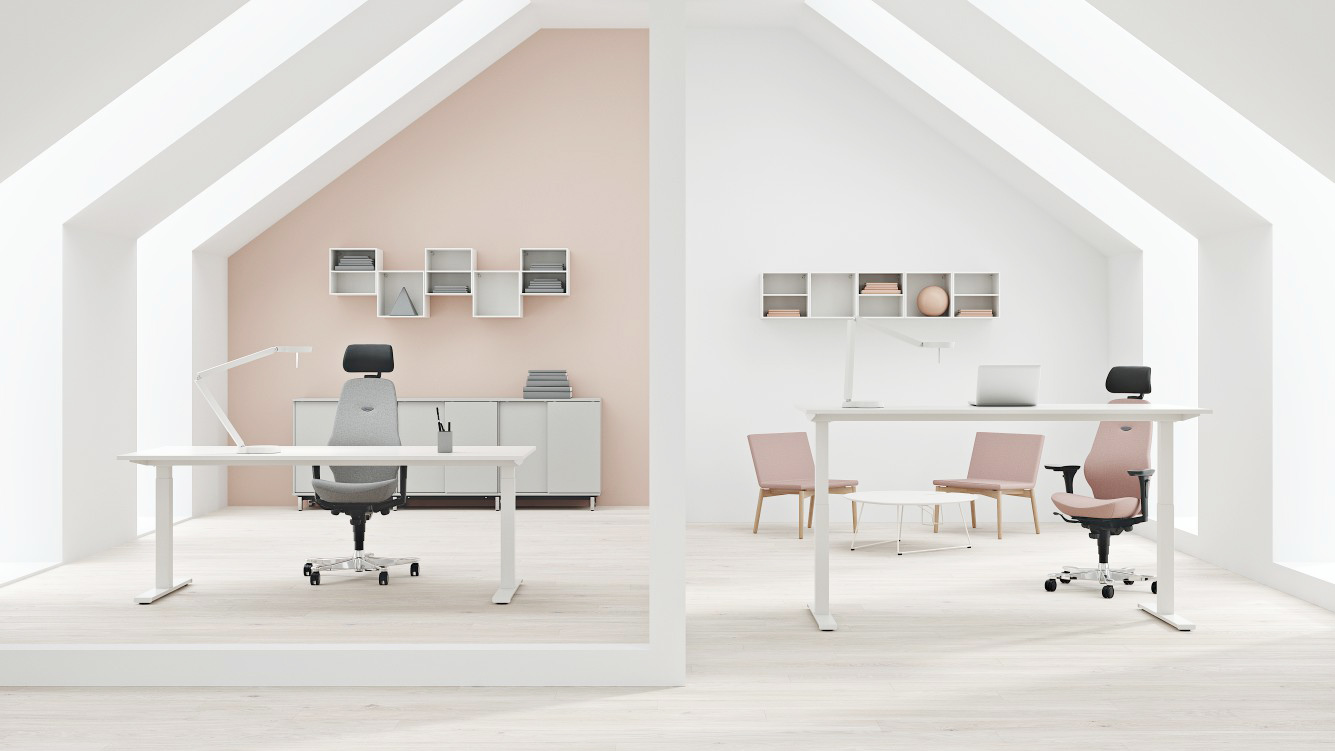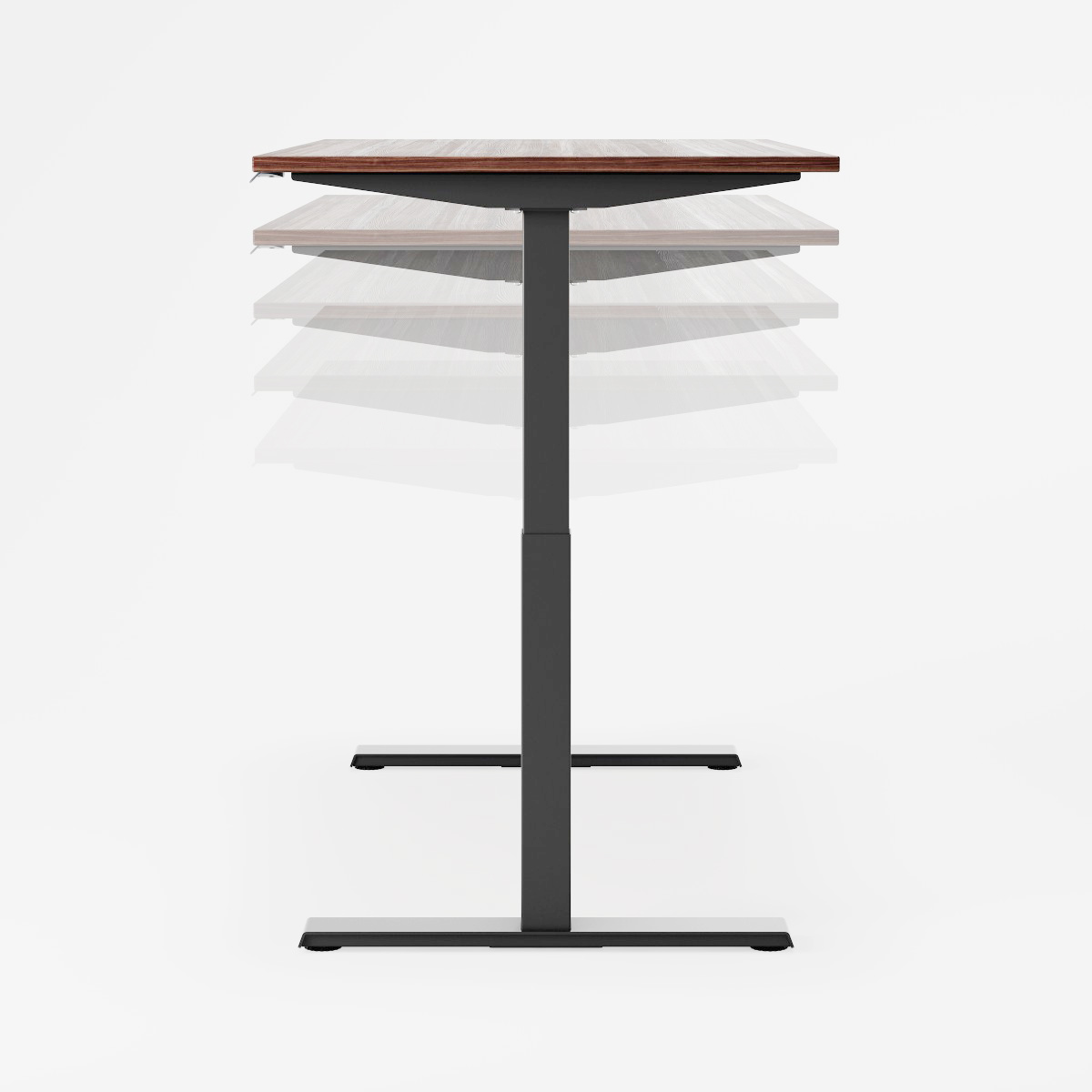Do you know anyone who has never experienced back pain? Chances are, you don’t. Almost all of us, at one time or another, have experienced that dull, nagging discomfort in our back, and tried to use heat plasters, baths, hot water bottles or, finally, physiotherapy to alleviate the pain. Back pain has long been recognized as a widespread condition that afflicts not only those engaged in physical work. It also has a high incidence among office workers, too. Among the most common causes are improper posture and too little movement.
One important tool in helping fight the back pain epidemic are adaptable desks that can be used whether you’re sitting or standing. The advantages quickly become obvious. When workers switch between walking, standing and sitting, they are supporting muscle build up and strengthening their overall muscular-skeletal system. Spending too much time seated, on the other hand, concentrates physical strain on one part of the body, placing added load on intervertebral disks, spinal joints and ligaments rather than the body’s muscles. Our back muscles hold our spine upright and support it when we move around. Loading strain on only one area, on the other hand, makes it more likely that muscles will atrophy. But apart from back pain, unhealthy workplace habits can also cause tension in the shoulders and neck, pain in the lumbar region, sleep and vision problems as well as migraines and dizziness. Yet all these can be prevented if back muscles are strong enough to fulfill this crucial, supportive role. Height-adjustable desks fight the problem by encouraging workers to move around more by preventing them sitting for too long in the same position. At the same time, they stimulate the body’s blood circulation, promoting a healthy flow of blood through the body which in turn helps increase concentration and employee performance.
Keeping to a healthy movement schedule is also important, however. :
Standing phases should be limited to 20 minutes at most, and shouldn’t make up more than 30% of your total time at work. The single most important factor in avoiding back pain is that workers often change their posture. Propping your upper body on the desk surface is acceptable, too. The postures we use at our desks should be as dynamic as possible, meaning that they should be variable and encourage movement. We should also spend around 10% of time walking around at work.
If we examine our work routines, we can probably all find tasks that don’t strictly necessitate sitting down. Among the tasks that are well suited to standing or walking are making a phone call, sorting documents or taking part in short meetings. For those of us who prefer to take things a bit more slowly, that still leaves us sitting down for 60% of the time.
But even as we’re easing into our comfortable office chairs, we should remember that some ways of sitting are better than others. Studies have shown that sitting places more strain on spinal disks than standing or lying, with the least strain placed when we are lying down.
The bottom line? Sitting hunched over a computer screen will kill your back. When we you down, you should always try to keepy your back straight, your shoulders relaxed and your arms hanging loosely at your sides so that your elbows are at a right angle and your lower arms are resting on your desktop. The same applies when standing at your desk. When sitting, try to keep your thighs as close to horizontal as you can; this will keep the angle between your feet and your knee at or above a healthy 90 degrees.

Another entry in the “Don’t!” column is lifting objects with a bent back and straight knees. Simply bending your knees will reduce the load placed on your spinal disks. All that’s required is that we develop a certain amount of initiative and discipline. Height-adjustable desks are, after all, only one tool in the fight to keep your back pain-free. Getting regular exercise or just moving about during your lunch break every day both bring long-term health benefits.
Height-adjustable desks are most common in Scandinavia, where they are a feature of around 90% of workplaces. Other Countries, too, have seen an increase in their popularity, often on the initiative of employees. Here, we can benefit from the expertise of companies providing height-adjustable office furniture, like the Swedish company Kinnarps, which offers a variety of programs that are consumer-friendly and easy to use. One attractive option is Kinnarps’ P series desks. This range is fitted with an electric motor to provide a fast, quiet solution that reduces back strain, while the desktop doesn’t need to be cleared or altered while it’s moving. Additional functions like a holder for computers, a third level, a desktop extension or a printer shelf mean that this desk offers the optimal solution to organize your workplace. The optional features let customers adapt their desks to suit their personal requirements yet re-configure later if needed.
Another advantage of the P series is the ample leg room, made possible by the desk’s high crossbeam that ensures stability and prevents computer screens from shaking or wobbling about. Units like these combine the benefits of a standing desk with the sturdiness and reliability of a sitting-only model.
Kinnarps desks don’t just offer advantages for employees; employers, too, value the fast rate at which these products pay for themselves. Encouraging workers to move around their office has been proven to reduce sick leave rates, leading to a reduction in the number of long staff absences. This benefits the entire team, who no longer have the cope with the stress and additional workload caused when a colleague is forced to stay at home. Health and fitness can be key in creating a good work and office climate, raising performance and making office work environments safer for all.
Find out more about the P Series here.
The article is a guest commentary by Kinnarps Germany.




